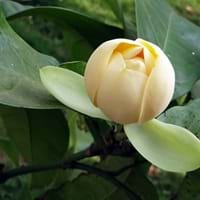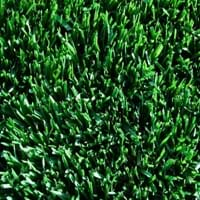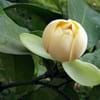Life Span
Perennial
Perennial
Origin
Cambodia, China, India, Indonesia, Papua New Guinea, Philippines, Singapore, Thailand, Viet Nam
World/Pandemic, North America, Europe
Types
Magnolia angatensis, Magnolia beccarii, Magnolia championii
Alene, Barblue, Caliber, Canterbury
Habitat
Wide range of ecological site
Cultivated Beds, Lawn, meadows
USDA Hardiness Zone
10-15
3-10
AHS Heat Zone
Not Available
8 - 1
Sunset Zone
Not Available
A1, A2, A3, 1a, 1b, 2a, 2b, 3a, 3b, 4, 5, 6, 7, 8, 9, 10, 11, 14, 15, 16, 17, 18, 19, 20, 21, 22, 23, 24
Habit
Oval or Rounded
Mat-forming
Minimum Width
Not Available
Flower Color
Gold, White, Yellow
Purplish Green
Flower Color Modifier
Bicolor
Bicolor
Fruit Color
Brown
Not Available
Leaf Color in Spring
Green
Green, Blue Green, Gray Green
Leaf Color in Summer
Green
Light Green
Leaf Color in Fall
Green, Yellow green
Green, Blue Green, Gray Green
Leaf Color in Winter
Gray Green
Green, Blue Green
Leaf Shape
Ovate
Narrowly linear
Plant Season
Spring, Summer
Spring, Summer, Fall
Sunlight
Full Sun, Partial Sun
Full Sun, Partial Sun, Partial shade
Type of Soil
Clay, Loam
Clay, Loam
The pH of Soil
Acidic, Neutral
Acidic, Neutral
Soil Drainage
Well drained
Well drained
Bloom Time
Spring, Late Spring
Summer
Tolerances
Not Available
Not Available
Where to Plant?
Ground
Ground
How to Plant?
Seedlings, Transplanting
Seedlings, Sod
Plant Maintenance
Medium
Medium
Watering Requirements
Prefer drip-irrigation instead of Over-head watering
Water frequently while growing
In Summer
Lots of watering
Lots of watering
In Spring
Moderate
Moderate
In Winter
Average Water
Average Water
Soil pH
Acidic, Neutral
Acidic, Neutral
Soil Type
Clay, Loam, Sand
Clay, Loam
Soil Drainage Capacity
Well drained
Well drained
Sun Exposure
Full Sun, Partial Sun
Full Sun, Partial Sun, Partial shade
Pruning
Prune if you want to improve plant shape
Remove damaged leaves, Remove dead branches, Remove dead leaves
Fertilizers
Fertilize in late fall, fertilize in spring, Requires high amount of nitrogen
Nitrogen
Pests and Diseases
Aphids, Bacterial Blight, Canker, Crown gall, Hoplia beetle, Leaf burn, Leaf spot, Mealybugs, Powdery mildew, Red blotch, Scorch, Soft scales, Thripes, Wetwood
Dollar spot, Rust, Summer Patch
Plant Tolerance
Not Available
Drought
Flowers
Showy
Insignificant
Flower Petal Number
Single
Single
Foliage Texture
Coarse
Fine
Foliage Sheen
Matte
Matte
Attracts
Not Available
Insects
Allergy
Not Available
Cough, Itchy eyes, Runny nose
Aesthetic Uses
Showy Purposes
Ground Cover
Beauty Benefits
Treatment of Dark Spots
Not Available
Environmental Uses
Air purification
Erosion control
Medicinal Uses
Alzheimer’s Disease, Anxiety, Cancer, Digestion problems, Liver problems, Menstrual Cramps, Respiratory Disorders, Weight loss
Not Available
Part of Plant Used
Whole plant
Leaves
Other Uses
Used as Ornamental plant, Used for its medicinal properties
Used in lawns and turf
Used As Indoor Plant
Yes
No
Used As Outdoor Plant
Yes
Yes
Garden Design
Feature Plant, Foundation, Shade Trees
Lawns and Turf
Botanical Name
Magnolia liliifera
POA pratensis
Common Name
Egg magnolia
Kentucky Bluegrass
In Hindi
Magnolia liliifera
Kentucky Bluegrass
In German
Magnolia Liliifera
Kentucky Bluegrass
In French
Magnolia Liliifera
Kentucky Bluegrass
In Spanish
Magnolia Liliifera
Pasto azul de Kentucky
In Greek
Magnolia Liliifera
Κεντάκυ Bluegrass
In Portuguese
Magnolia Liliifera
Kentucky Bluegrass
In Polish
Magnolia Liliifera
Wiechlina
In Latin
Magnolia Liliifera
Kentucky Bluegrass
Phylum
Tracheophyta
Magnoliophyta
Class
Magnoliopsida
Liliopsida
Order
Magnoliales
Cyperales
Family
Magnoliaceae
Poaceae
Clade
Angiosperms, Magnoliids
Angiosperms, Commelinids, Monocots
Tribe
Not Available
Poeae
Subfamily
Not Available
Pooideae
Number of Species
Not Available
Importance of Magnolia Liliifera and Kentucky Bluegrass
Want to have the most appropriate plant for your garden? You might want to know the importance of Magnolia Liliifera and Kentucky Bluegrass. Basically, these two plants vary in many aspects. Compare Magnolia Liliifera and Kentucky Bluegrass as they differ in many characteristics such as their life, care, benefits, facts, etc. Every gardener must at least have the slightest clue about the plants he wants to plant in his garden. Compare their benefits, which differ in many ways like facts and uses. The medicinal use of Magnolia Liliifera is Alzheimer’s Disease, Anxiety, Cancer, Digestion problems, Liver problems, Menstrual Cramps, Respiratory Disorders and Weight loss whereas of Kentucky Bluegrass is Not Available. Magnolia Liliifera has beauty benefits as follows: Treatment of Dark Spots while Kentucky Bluegrass has beauty benefits as follows: Treatment of Dark Spots.
Compare Facts of Magnolia Liliifera vs Kentucky Bluegrass
How to choose the best garden plant for your garden depending upon its facts? Here garden plant comparison will help you to solve this query. Compare the facts of Magnolia Liliifera vs Kentucky Bluegrass and know which one to choose. As garden plants have benefits and other uses, allergy is also a major drawback of plants for some people. Allergic reactions of Magnolia Liliifera are Not Available whereas of Kentucky Bluegrass have Cough, Itchy eyes and Runny nose respectively. Having a fruit bearing plant in your garden can be a plus point of your garden. Magnolia Liliifera has no showy fruits and Kentucky Bluegrass has no showy fruits. Also Magnolia Liliifera is not flowering and Kentucky Bluegrass is not flowering . You can compare Magnolia Liliifera and Kentucky Bluegrass facts and facts of other plants too.





